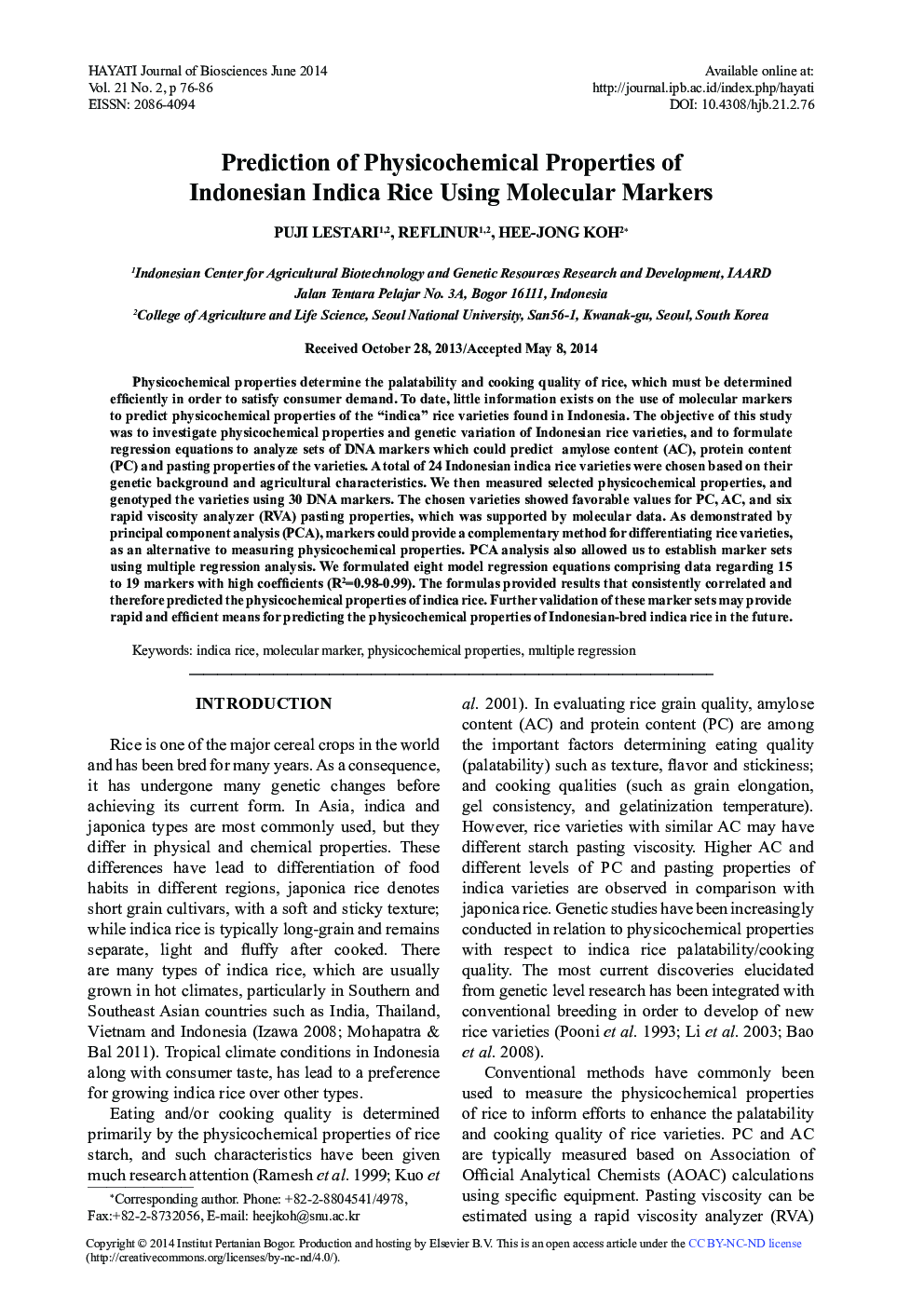| Article ID | Journal | Published Year | Pages | File Type |
|---|---|---|---|---|
| 2085829 | HAYATI Journal of Biosciences | 2014 | 11 Pages |
Physicochemical properties determine the palatability and cooking quality of rice, which must be determined efficiently in order to satisfy consumer demand. To date, little information exists on the use of molecular markers to predict physicochemical properties of the “indica” rice varieties found in Indonesia. The objective of this study was to investigate physicochemical properties and genetic variation of Indonesian rice varieties, and to formulate regression equations to analyze sets of DNA markers which could predict amylose content (AC), protein content (PC) and pasting properties of the varieties. A total of 24 Indonesian indica rice varieties were chosen based on their genetic background and agricultural characteristics. We then measured selected physicochemical properties, and genotyped the varieties using 30 DNA markers. The chosen varieties showed favorable values for PC, AC, and six rapid viscosity analyzer (RVA) pasting properties, which was supported by molecular data. As demonstrated by principal component analysis (PCA), markers could provide a complementary method for differentiating rice varieties, as an alternative to measuring physicochemical properties. PCA analysis also allowed us to establish marker sets using multiple regression analysis. We formulated eight model regression equations comprising data regarding 15 to 19 markers with high coefficients (R2=0.98-0.99). The formulas provided results that consistently correlated and therefore predicted the physicochemical properties of indica rice. Further validation of these marker sets may provide rapid and efficient means for predicting the physicochemical properties of Indonesian-bred indica rice in the future.
